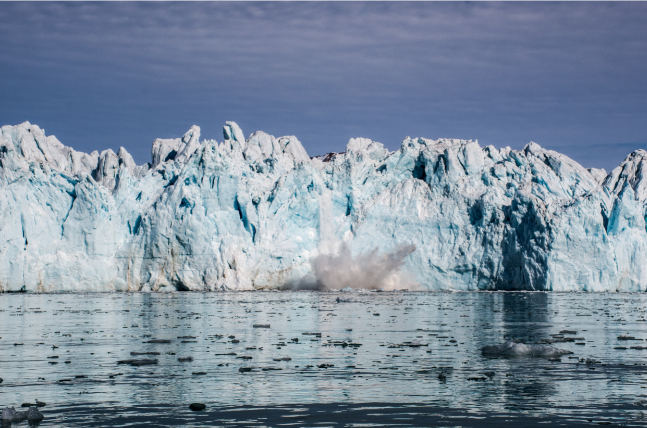Two recent events have demonstrated the urgency of transitioning to a new energy paradigm.
Firstly, the Ukraine war, which has highlighted the importance of freeing ourselves from energy dependence on Russia, which currently accounts for 40% of European sources.
Secondly, the UN IPCC report (published in April), which shows that without transformation, the world is heading for a 3.2º rise in temperature by 2100.
The next three years will therefore be critical as we attempt to rapidly decarbonise the global economy and transition to net zero.
Although the speed of the transition is not yet clear, transition must happen and investors should therefore start integrating its impact into portfolios, given it will influence macroeconomic variables, asset class returns and relative valuation in equities.
Climate impact on macroeconomic variables
Climate transition will have an impact on growth and inflation. According to a Reuters poll of climate economists last year, the transition to net zero will require green investments worth 2%-3% of global GDP each year until 2050.
This is far more positive than the economic cost of inaction. The more we delay climate transition, the higher the costs will be in terms of growth drag given how material risks will multiply as climate change takes place. Output costs of a delayed transition could be significant, at around 5% of world GDP.
To understand the impact on the economy, two factors need to be assessed – transition and physical.
Transition factors include the impact of decarbonising the economy, such as the move to renewables, use of electrical vehicles or investment in carbon-offset projects, while physical risk looks at changes to the physical environment brought on by climate change, such as shifts in climate patterns resulting in increased floods, hurricanes etc.
The transition factor is expected to have a positive effect on the economy, while physical risk should be negative, though this will grow in the event of a disorderly transition.
This is well illustrated in the different scenarios designed by the Network for Greening the Financial System (NGFS).
Taking physical and transition aspects into account, they have outlined six policy scenarios for which they designed different paths for real GDP and inflation.
While there is a wide dispersion of outcomes, real GDP is expected to be lower than the base line as the negative impact from physical risks is not totally compensated for by the positive impact of investments linked to the transition. Inflation would also be higher given the transition factor.
Climate impact on bonds
For government bonds, terminal yields will be directly impacted by real GDP and inflation assumptions.
Lower GDP means lower real yields, while higher inflation will mean higher yields. Fixed income will be pulled between those two variables and the interaction of these forces will be key.
For corporate bonds, credit loss matrices will need to be adjusted to take into account the higher probability of defaults linked to a more challenging macroeconomic scenario and higher physical risks.
There will also be inflationary pressures arising from carbon prices being increasingly integrated on a worldwide basis.
Climate impact on equity markets
Climate transition will also influence equities given the requirement for companies to transform their business models. It will also have an impact on relative valuations for sectors as those benefiting from climate transition will trade at a premium to others.
While many sectors and companies driving net zero will prosper, on average the economy will be impacted more by the cost of negative externalities.
The adjustment variable on markets will most likely be a lower Return on Equity (ROE) than the current 12%-15%.
We expect the impact of climate transition to be positive for revenues driven by the inflationary nature of the transition policies.
Regarding profitability, the picture is more mixed. Some companies and sectors will be able to pass these costs to customers while others will not.
This will create relative value arbitrage opportunities, making stock and sector picking critical.
Investing in carbon futures
Today, institutional investors are increasingly interested in including carbon futures in their portfolios.
They are increasingly participating in the carbon futures markets for three main reasons: 1) to offset the carbon impact of their other investments as part of a sustainable investment strategy; 2) in response to expectations of a sharp price increase; and 3) to protect against inflation risk.
The framework provided by the EU Emissions Trading System (ETS) creates a regulated market structure, which in turn makes traded allowances the most efficient instrument to trade carbon given the liquidity and depth.
The impact of climate transition through macroeconomic and corporate fundamental variables will influence asset pricing and therefore asset allocation for investors.
The role for active managers will be dynamic risk allocation and investors will need to view asset allocation differently, making sure they have enough diversification to protect against more disperse growth and inflationary pressures.
There will also be a need for active stock picking to ensure investors are holding companies benefiting from the transition rather than being impacted by it.
Fiona Frick is chief executive officer of Unigestion.

